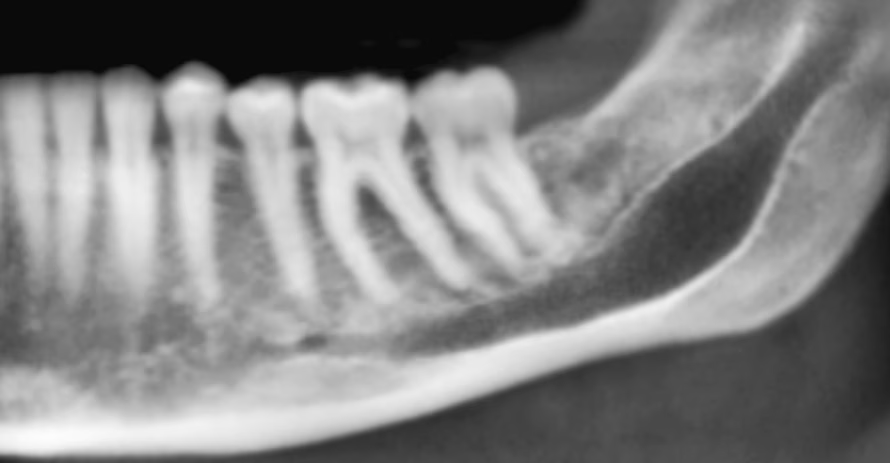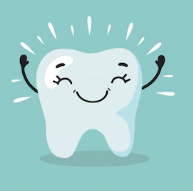When most people hear the word “tumor,” they think of something dangerous. But in dentistry and oral medicine, many tumors are benign, meaning they are not cancer. These growths develop slowly, don’t spread to other parts of the body, and can usually be treated very successfully.
Some tumors form from tissues other than teeth, these are called non-odontogenic tumors.
What Are Non-Odontogenic Tumors?
These are non-cancerous growths that come from tissues around the jaw and face, such as:
- Nerves
- Blood vessels
- Bone
- Immune system cells
They are found in the jawbone or in the soft tissues of the mouth.
Most are discovered on routine dental X-rays long before they cause symptoms.
General Symptoms Patients Might Notice
Most people don’t feel anything at first. If the tumor grows, you might notice:
- A firm or painless swelling
- A tooth that moves or erupts early
- A feeling of fullness in the jaw
- A lump along the gumline
- Unusual spacing or shifting of teeth
Because these tumors often develop slowly, regular dental checkups are key.
Types of Non-Odontogenic Tumors
1. Neural Tumors (Nerve-Based Tumors)

These tumors grow from the cells around nerves.
Common examples:
- Neurilemmoma (Schwannoma)
- Neurofibroma
- Traumatic neuroma
Symptoms:
- Usually painless
- Sometimes tingling or numbness
- Often found in or near the lower jaw nerve canal
Treatment:
✔️ Surgical removal
These tumors are typically removed gently while preserving the nerve whenever possible.
Most patients recover very well.
2. Vascular Malformations (Abnormal Blood Vessel Growths)

These are not tumors in the usual sense — they are collections of abnormal blood vessels.
Symptoms:
- Swelling in the jaw
- Teeth erupting early
- Pulsing sensation
- Bleeding if bumped
Treatment:
✔️ Carefully planned treatment by specialists (oral surgeon + interventional radiologist)
May include:
- Sclerotherapy (injection to shrink the vessels)
- Laser treatment
- Embolization (blocking blood flow for safety)
- Surgical removal if safe
3. Osteoma (Benign Bone Growth)

A slow-growing, hard lump made of normal bone.
Symptoms:
- Firm bump on the jaw
- Usually painless
- Sometimes noticed on a scan
Treatment:
✔️ No treatment if small and harmless
✔️ Surgical removal if:
- It causes discomfort
- It grows
- It affects appearance
- It interferes with jaw movement
Special note:
Multiple osteomas may be part of Gardner Syndrome, requiring a medical referral for evaluation.
4. Central Giant Cell Granuloma (CGCG)

A benign but sometimes aggressive growth inside the jawbone.
Symptoms:
- Painless swelling
- Teeth moving or resorbing
- Expansion of the jawbone
Treatment:
Treatment depends on how aggressive it is.
✔️ Curettage (surgical scraping) — most common
✔️ Medication-based options in selected cases:
- Steroid injections
- Calcitonin
- Interferon therapy
- Denosumab (in certain situations)
✔️ Resection for recurrent or very aggressive cases
5. Aneurysmal Bone Cyst (ABC)

A rapidly growing, blood-filled bone cavity.
Symptoms:
- Quick, noticeable swelling
- May cause facial asymmetry
- Sometimes discomfort
Treatment:
✔️ Surgical removal (curettage)
✔️ Bone grafting if a large area was removed
✔️ Close follow-up because ABCs can return
Some advanced centers offer:
- Sclerotherapy injections
- Embolization for large lesions
6. Cherubism

A rare inherited condition causing symmetrical swelling of both sides of the jaw in children.
Symptoms:
- Puffy cheeks (cherub-like appearance)
- Teeth displaced or delayed eruption
- Swelling present in childhood, improving with age
Treatment:
✔️ Usually observation only
Most cases shrink on their own as the child grows.
✔️ Treatment only if needed, such as:
- Functional problems
- Severe cosmetic concerns
- Difficulty chewing or speaking
Options may include contouring surgery or orthodontic treatment.
7. Langerhans Cell Histiocytosis (LCH)

A rare condition involving immune system cells that can affect bone — including the jaw.
Symptoms:
- Loose teeth not due to gum disease
- Gum swelling
- Pain or tenderness
- Teeth appearing to “float” on an X-ray
Treatment:
Treatment depends on severity:
✔️ For single jaw lesions:
- Curettage (surgical cleaning)
- Low-dose steroid injections
- Close monitoring
✔️ For more extensive disease:
- Systemic medications
- Targeted therapies
- Coordinated care with medical specialists
Many localized cases have an excellent prognosis.
Are These Tumors Dangerous?
Generally, no. Most are:
- Slow-growing
- Non-cancerous
- Treatable
- Often found early
But they should not be ignored — early diagnosis prevents complications like bone weakening, tooth movement, or facial asymmetry.
When to See a Dentist or Specialist
You should get checked if you notice:
- Unexplained swelling in the jaw or face
- Loose teeth without gum disease
- A persistent bump on the gums or jaw
- A tooth that erupts too early or too late
- Jaw pain without a clear cause
Regular dental X-rays help catch these early.
Disclaimer
The contents of this website, such as text, graphics, images, and other material are for informational purposes only and are not intended to be substituted for professional medical advice, diagnosis, or treatment. Nothing on this website constitutes the practice of medicine, law or any other regulated profession.
No two mouths are the same, and each oral situation is unique. As such, it isn’t possible to give comprehensive advice or diagnose oral conditions based on articles alone. The best way to ensure you’re getting the best dental care possible is to visit a dentist in person for an examination and consultation.
SAVE TIME AND MONEY AT ANY DENTIST

Less dental work is healthier for you. Learn what you can do to minimize the cost of dental procedures and avoid the dentist altogether!

